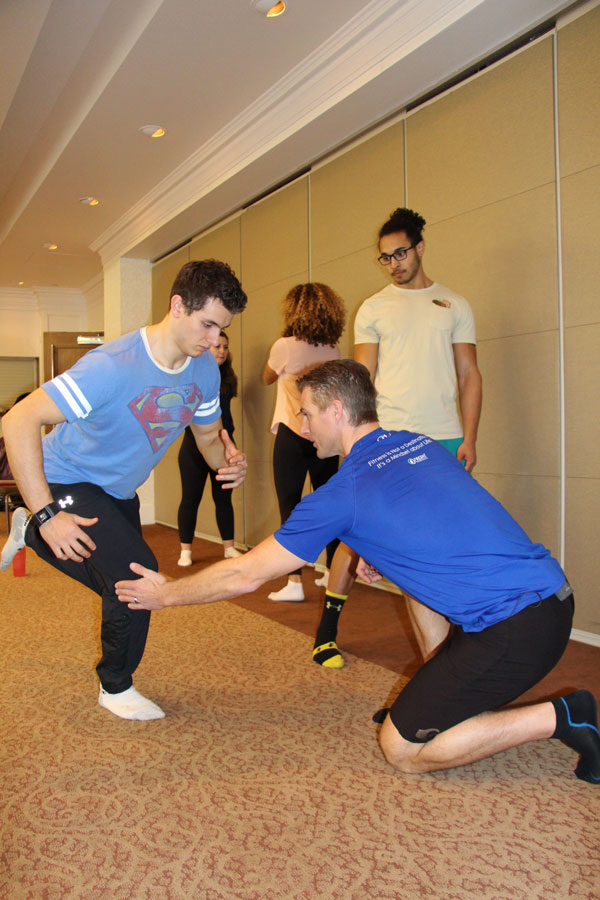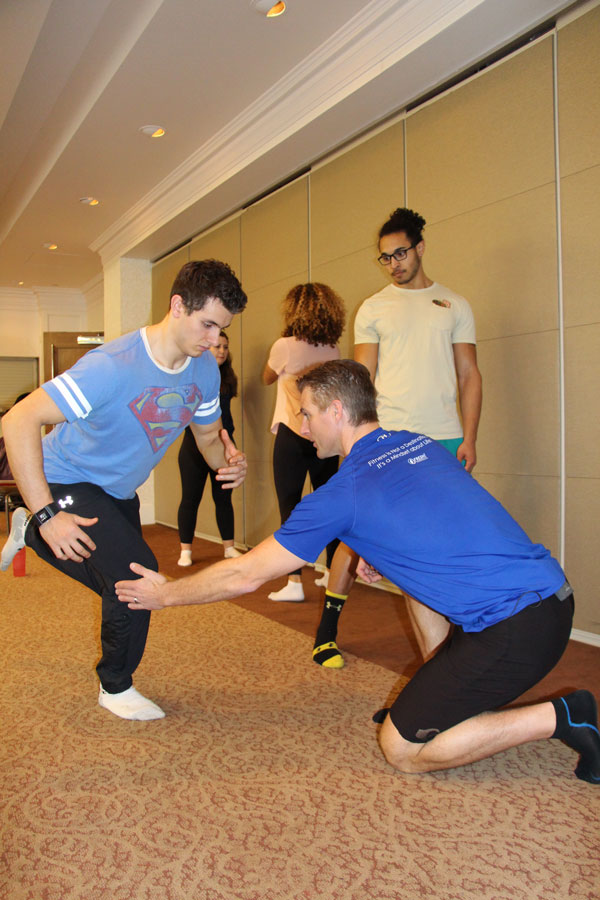
The lunge is one of the most common movement patterns out there. In my humble opinion, it is also one of the worst exercises for technique.
I’ve always been interested in WHY certain exercises are done in a specific way, and the lunge is at the top of my pet peeve list. Perhaps it’s because of my sport background and then transitioning into the world of fitness,
To me, fitness has taken a very useful and effective movement pattern and turned it into something unrecognizable that injures people every day.
Ok. Now that I’ve had my little rant, let’s dive into why I believe this, and if it makes sense to you.
Recently, I did a Google image search for the keyword “lunge exercise”. Here’s a screenshot of the results.
What do you notice about these lunge images?
First, they all have the same basic technique. I call this version a “90/90” lunge since both knees are typically at 90 degrees.Looking at the lunge pattern images below, do you notice a difference?As shown in the images above sporting and dynamic activity environments (such as most fitness classes and “functional” exercise programs) create strong, stable, loading of body weight over the front leg. When we look at the facts, lunging is an extremely common, naturally powerful and effective athletic position that’s seen in virtually every sporting active pursuit in life.Looking back at the fitness examples in the Google search, it’s easy to see that in every instance, weight is evenly distributed between both legs, and the person’s torso is vertical.By splitting the weight distribution, we are put in an inefficient and biomechanically disadvantaged position. This means that the alignment of the body is not set up for effective joint stability or force production.A 90/90 knee position creates unnecessary shearing forces at the knee when trying to move forward out of this position, because only a small fraction of the largest muscles in the leg are inactive on the propulsion (back) leg.


The primary alignment cues for squat and lunge are the same:
- Feet flat on floor
- Toes and knees pointing in same direction (ideally forward)
- Sternum over arch of foot
- Neutral spinal posture with effective bracing
Satisfying these four factors will solve the lion’s share of lunge and squat issues for almost every related exercise.
What most people do for a lunge is equivalent to a hack squat. Sure, it’s a documented exercise, but only loosely related to the real life biomechanics and firing patterns of an actual squat (or lunge).
Here is what I believe a proper lunge should look like. Note that when the weight is over the front leg, it doesn’t matter how far out, or what position the other leg is in!
I won’t get too deep into the science and details, but hopefully this has helped you rethink how you are lunging (and squatting), in addition to how you are coaching your clients to perform a lunge (and squat).
Want more? Here’s a video to see this new perspective in action.

